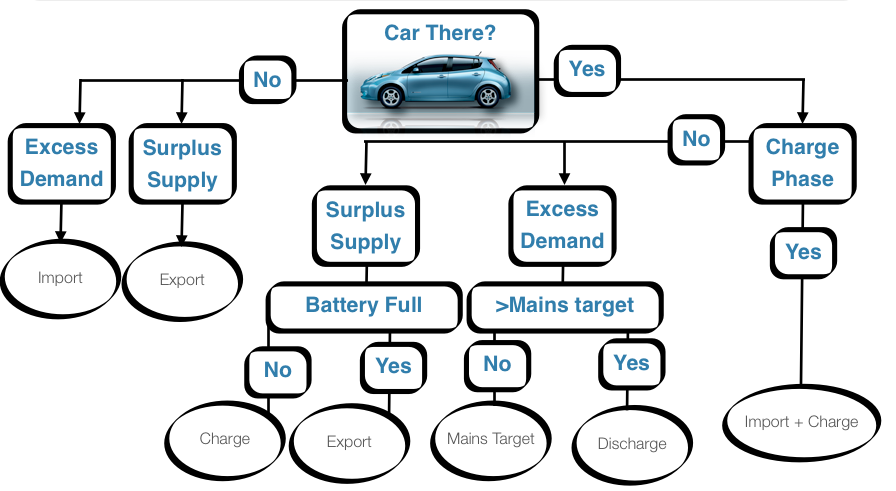Control Model
The method by which we determine what the state of play will be at each time step in our high resolution model of our 4 occupant Zero Carbon House with integrated EV.
This base model is capable of running all 3 scenarios
Control Flow Diagram

Control Constraints
We outlines several constrains the program would have in its logic:
PV
- Supplies household demand
- Surplus charges battery if required
- Extra exported to grid
Grid:
- Supplies household demand
- Charge battery charge at set time
EV Battery
- Supplies household in periods of excess demand
Car
- Still able to maintain function as a vehicle
Control Flow Diagram
The above diagram illustrates the control flow of our model of an Electric Vehicle integrated with a Zero Carbon Home in our most complex scenario - Scenario 3. The model fist checks the base case of the scenario, is the car present. If the car is absent the model will fall back onto Scenario One as there is no battery present.
We then check if we are in a 'Charge Phase', this is when the EV is set to charge from the grid at a continuos rate. In our scenario this occurs from 22:00-06:00 or until the battery reaches 100% state of charge. If the model is not in a state of charge the model is then responsive to household demand and supply. The battery is able to support the grid in times of excess demand greater than our defined mains target. Likewise (in Scenario 3) the battery is able to charge from surplus PV generation during the day.

Download Details
This control model is available to download and execute.
Installation and execution requirements:
- Java Virtual Machine (JVM) installed
- Input data file in correct format
- Mac OSX, Linux (various) or Windows (various) Operating System
- Defined folder system in place
Files
Free to use, no support given
includes README file on document inputs and running instructions